Spinach is an early plant, which makes it possible to receive a harvest from April to August. This is a cold-resistant annual culture. The optimal temperature for growth is the indicator 15 ° C. But this plant can withstand and frost. The spinach began to acquire popularity recently, but due to the presence of a huge amount of beneficial substances and vitamins, the demand for this culture is rapidly increasing.
Features of culture
Spinach has a significant nutritional value. Its distinctive feature is the ability to save useful elements in any condition. After thermal processing or freezing, it will be almost as useful as in the raw form. The spinach contains ascorbic, oxable, linolenic and oleic acid, as well as carotene, phosphorus, manganese, iodine, calcium, sodium, iron, copper, vitamins K, E, R, RR, in. Spinach helps to strengthen the nervous system, normalizing the activities of the gastrointestinal tract. It helps stabilize the state at a small-class. But its use must be limited in violation of the liver and kidney function.
Spinach. Photo:
Spinach varieties
There are many varieties of this culture. Consider the most common:
- Among the rapid varieties, the varieties of "Golyansky" and "Stoik" can be distinguished. It takes from 15 to 20 days to maturation.
- The secondary varieties include "Matador" and "Killing". Ripen these cultures for 25-30 days.
- To get a crop of late varieties such as "Victoria" or "fatty" will be required from 30 to 35 days.
Preparation of soil
Planting spinach is carried out into fertile sampling and thin soils. But this culture is unpretentious to the cultivation environment and is able to give a harvest and on another soil when complying with certain rules. Spinach grown on sandy soils should be abundantly watering. Choosing a place to land, it should be borne in mind that this plant needs solar rays. Lack of lighting will reduce the content of vitamin C in the leaves of culture. Before boarding, the soil is preliminarily prepared.
This process is performed in two stages:
- In the fall of the area on which the culture is expected, it is necessary to distribute the humus, after which it becomes soil. Then the soil is enriched with superphosphate and potassium chloride. If there is a need for lime, it is made of lime-fluff, the dolomite flour or the crushed chalk.
- In the spring period, urea is used to saturate the soil. Dung is not recommended in the spring, as this will adversely affect the taste of culture.
Planting spinach
The cultivation of spinach makes it possible continuously, throughout the season, turn on fresh greens in the diet. You can land this culture in the fall or in the spring. If you put seeds in September with the arrival of spring spinach you can already collect. The first shoots will seem before frosts, and 13-15 days after the snow culture comes. Sweep spring spinach until April 15.
Seeds before landing must pass preliminary training:
- They are placed in warm water, a temperature of + 25 ° C per 48 hours, with every 4 hours the fluid must be changed.
- Then the landing material must dry.
- On the site are made shallow trenches at a distance of 20 cm. At 1 m, approximately 5 g of planting material is consumed.
- Seeds sit down 5 cm from each other. They should be gluable approximately 2 cm in the ground, then pour the earth layer on top and pour the culture.
- The first shoots appear in 2 weeks.
How to grow spinach in the garden
Spinach is a moisture culture. Water up to 4 times a week. About 10 liters of water are used to 1 m so that the liquid can penetrate 10 cm. During the precipitation period, the norm should be reduced. If all the necessary preparatory measures have been taken before landing, the soil in the process of culture culture does not need additional enrichment with nutrients. But if the spinach is not well developed or has a pale color, it should be poured urea diluted in water.
This culture needs to rewrite so that the neighboring plants do not touch each other with leaves. In the course of this procedure, small and weak sprouts are removed. If the spinach begins early and quickly let the arrows, this process can be delayed by setting the arc and cover the area with an opaque film. Soil must be regularly poured to prevent the spread of weed plants.
Harvesting
For culture ripening, it will be necessary from 20 to 30 days. The main sign of the readiness of the spinach to use is the presence of 5 to 7 leaves. Features of the collection and harvesting of culture are shown below:
- Leaves need to be assembled before the formation of the stem.
- The most suitable time for collecting is considered earlier morning, since such a spinach retains its appearance longer. It can be removed from the root or cut.
- Store the leaves follows in the refrigerator conditions during the week.
- Throughout this period, the culture saves all useful properties.
- For longer storage, spinach needs to freeze.
Strawberry spinach: how to grow
This culture got its name thanks to the fruits, which have resemblance to the strawberry fruit. The food can be used as leaves and berries. It is an annual cold-resistant plant belonging to the family Chenopodiaceae. Strawberry spinach differs unpretentiousness to the growing conditions. It can be planted in any soil. Culture withstands temperature decrease to -10 ° C, tolerates hot weather.
Grow a spinach are two methods:
- seedlings;
- nonseedlings.
The first option allows you to get the green in early spring. To do this, in early March are beginning to grow seedlings. The prepared container need to pour the ground, put into it the seeds, sprinkle them with earth and watered. To accelerate the emergence of seedlings pots covered with foil. This creates a greenhouse effect. The first shoots appear after two weeks. The film then must be removed, otherwise the plant will be on mold and fungal diseases. When spinach leaves appear 4-5 it can be planted in open ground.
To start growing nonseedlings method can be used immediately after the snow melts. For planting to prepare the wells, which shall be located from each other at a distance of 40 cm. Several seed units placed in one well. When the shoots grow a culture is necessary to thin out. Strawberry spinach endures drought, but it should be watered whenever possible. Abundant watering will provide juicy and large fruit. Also, the culture must be weed, especially at an early stage of growth. When the spinach grows up from weeding can be dispensed with. His overgrown branches will become a kind of barrier to the spread of weeds.
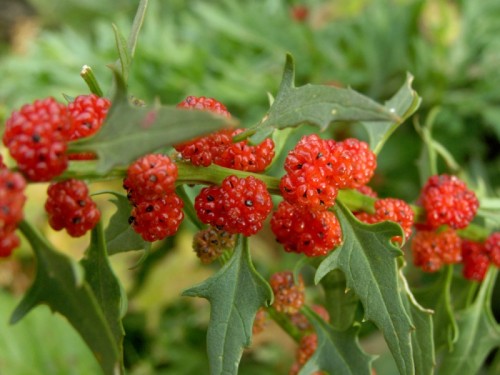
Fertilizers for spinach
One of the conditions for obtaining high-quality spinach harvest is to enrich the soil with nutrients. This can be done by means of organic and mineral substances. Consider the fertilizer, which saturates the soil before planting spinach.
- In making the soil urea. This material is characterized by a high concentration of nitrogen. This fertilizer is white, is available in granular form. Prior to use, it must be dissolved in water. When entering into the ground at 1 m 2 It requires 15-20 g of the tool.
- Urea can be used as a foliar application. For this purpose, it is diluted at the rate of 50 g per 10 liters of water for spraying an area of \u200b\u200b100 m 2. Simultaneously with urea can not make superphosphate or lime.
- Superphosphate refers to phosphoric fertilizers. Produced in powdered and granulated form. It includes phosphoritis and phosphate acid. 1 M. 2 It is used 50-60 g of substance. This fertilizer is suitable for acidic soils, since due to the presence of calcium sulfate it does not increase the acidity of the soil.
- Potassium chloride is a representative of the potash group of fertilizers. It has the appearance of a white, gray or pink crystalline powder. The composition contains potassium oxide. In the ground is made at the rate of 30 g per 1 m 2. Calilation chloride enrich the structure of the soil mainly in the autumn period.
- Dolomitic flour is a magnesium fertilizer. Contains calcium and magnesium, applied to the purpose of limeting the soil.
- The humus is a dark loose mass formed as a result of the expansion of manure. This fertilizer contains the maximum concentration of nutritional elements. But so that they are preserved the humus need to be properly stored. For this purpose, it is necessary to take a small plot on a dense soil. If there is no such possibility, sandy soil is suitable, but it is predefined to cover with a polyethylene film.
It initially places peat or straw with a layer of 25-30 cm. This is necessary to absorb the dunglazhi. Then the fertilizer is placed on the bed and the fertilizer. The height of the manure should not exceed 1.5 m, and the width is 2 m. Length may be arbitrary. If the manure is laid on long storage, it must be filled with a layer of Earth 20 cm. A regular film is suitable for a short storage. On the meter, the square soil uses 5-6 kg of such fertilizer.
- Compost improves the structure of the soil and saturates the nutritional elements of its upper layers. For compost, you can use food waste, grass, crushed branches, coffee thick, tea brewing, sawdust, straw, hay. To prepare this fertilizer, you need to prepare a pit or a container with a height of 1, 5 m and 2x2 m wide. The container exceeds these parameters is not recommended, as the mass will overheat and insufficiently ventilated. In such conditions, the necessary microflora does not develop. In a smaller container, fertilizer will not warm up to the desired temperature.
On the bottom of the container are placed branches that will play the role of drainage. Next can be laid organic waste. The thickness of each layer should be from 30 to 50 cm. To speed up the decomposition process, the mass should be intermitted periodically. Compost will be ready for use when it becomes a crumbly structure and dark color.

Diseases and pests
Spinach can affect such fungal diseases as root rot and false dew. The presence of the first disease can be determined by the blackened root. The rotes affects the entire root system, as a result of which the plant dies. The dissemination of the disease contributes to the soil seal. To prevent the appearance of rot, the soil should be periodically disappeared.
If the spots of yellow and gray-violet flare appeared on the leaves, the plant is affected by false grooves, and it is necessary to take appropriate measures. The leaves are lubricated with colloid or ground gray, after which the culture is processed by the infusion of a cowboat or a sulfur suspension.
The pests of spinach belongs to the mining fly. In the first days of June, on the back of the leaves, it lays eggs, from which the larvae appear later. They bite into a sheet, as a result of which swollen spots and the plant appears on it. The following measures will help protect the culture from this pest:
- You can not land spinach near the bed with beets.
- It is necessary to regularly remove the affected leaves and weighing plants.
To affect spinach can be a word. You can get rid of it using a solution of economic or potash soap. On 10 liters of water, it will take 300 g. This means spray affected areas within 7-10 days. If necessary, the procedure is repeated.
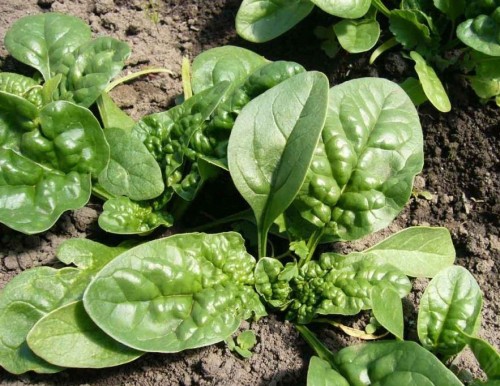
Conclusion
Spinach is a rather unpretentious plant, which greatly facilitates its cultivation. Caring for this culture involves standard actions: thinning, watering, weeding. The enrichment of the soil with nutritional elements will help get a high-quality harvest.
Spinach. Video:


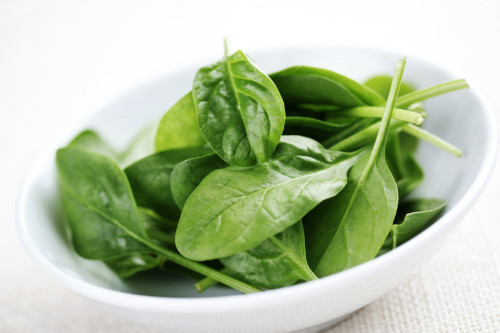
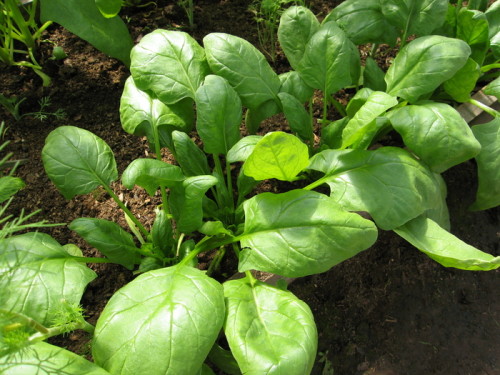
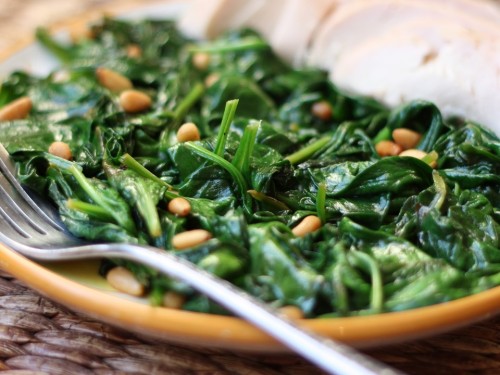

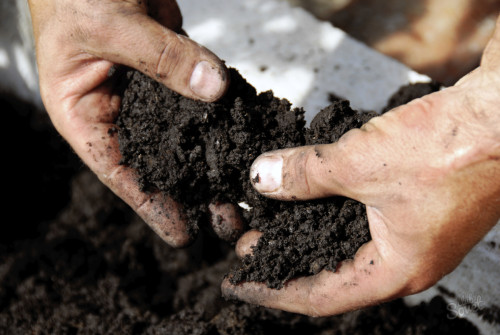
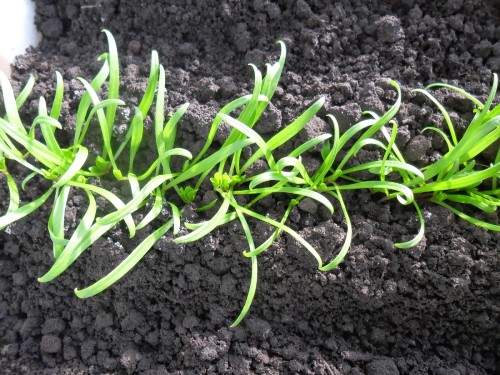
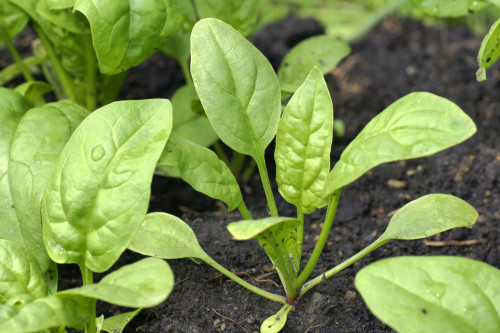
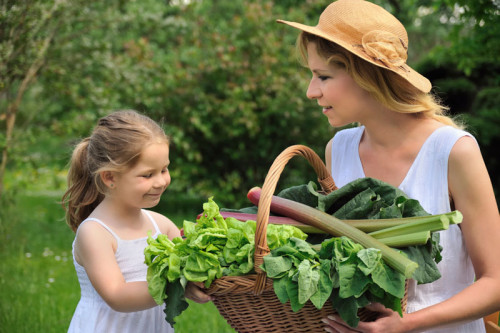












 Start a discussion ...
Start a discussion ...